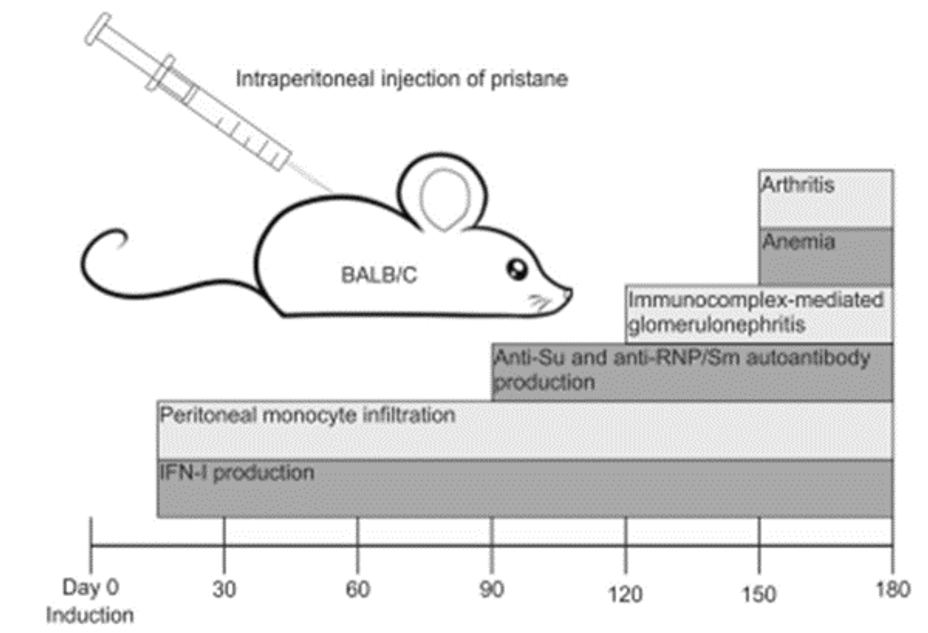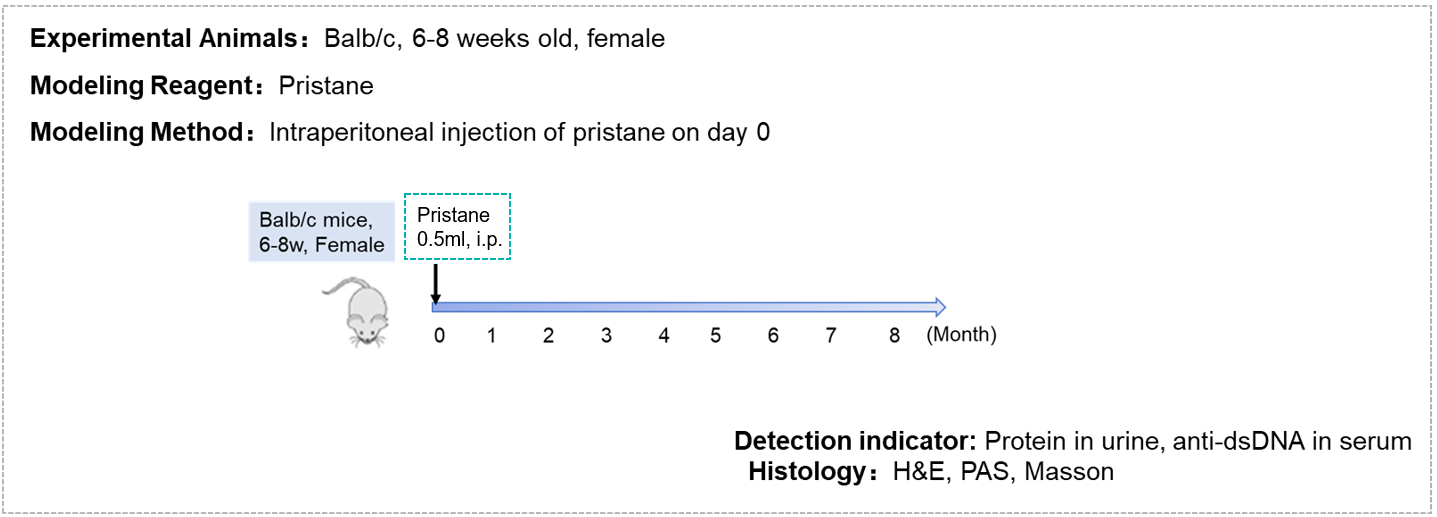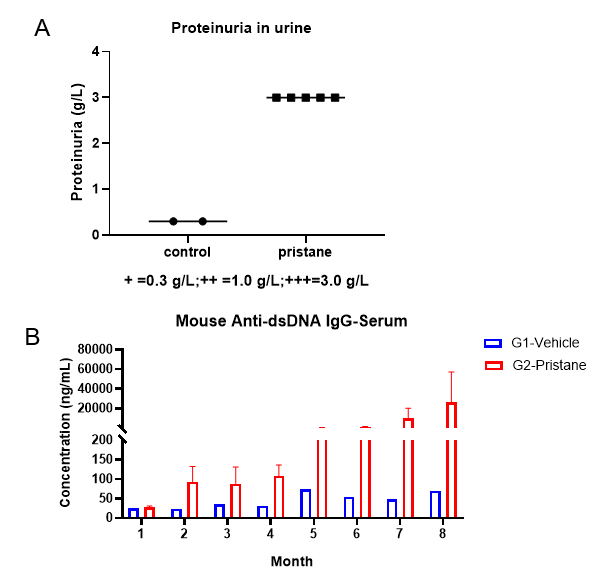系统性红斑狼疮(Systemic lupus erythematosus, SLE)是一种严重的自身免疫性疾病,其特征是免疫调节功能障碍,炎症细胞因子产生过多,自身反应性细胞和抗体[1]攻击正常组织(心脏、关节、皮肤、肺、血管、肝、肾和神经系统)[1]。

Fig 1. Overview of the Pathogenesis of Systemic Lupus Erythematosus [1]
降植烷又称烃类油(2,6,10,14-四甲基十五烷,TMPD),可引发多种自身抗体。接受棘烷治疗的小鼠出现富含单克隆抗体的腹水、局部慢性炎症(脂肪肉芽肿)和类风湿性糜烂性关节炎。这些临床表现类似于SLE[2]。

Fig 2. Clinical manifestations in Balb/c over the trial period [2].
基于BALB/c小鼠的SLE小鼠模型的建立

Pristane诱导的BALB/c小鼠SLE

图1. 降植烷可增加尿蛋白和血清抗dsDNA抗体。第0天腹腔注射降植烷,每个月收集尿液和血液。实验结束后取肾组织行病理学检查。降植烷显著增加尿蛋白(A)和血清抗dsDNA IgG (B)。
参考文献
[1] Tsokos GC. Systemic lupus erythematosus. N Engl J Med. 2011, 365(22):2110-21.
[2] Freitas EC, de Oliveira MS, Monticielo OA. Pristane-induced lupus: considerations on this experimental model. Clin Rheumatol. 2017. 36(11):2403-2414.
 苏公网安备:32068402320845号
网站建设:北京分形科技
苏公网安备:32068402320845号
网站建设:北京分形科技






 010-56967680
010-56967680 info@bbctg.com.cn
info@bbctg.com.cn